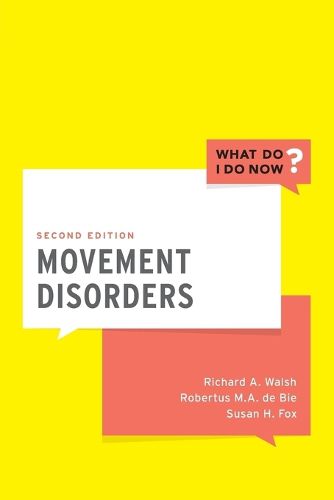Readings Newsletter
Become a Readings Member to make your shopping experience even easier.
Sign in or sign up for free!
You’re not far away from qualifying for FREE standard shipping within Australia
You’ve qualified for FREE standard shipping within Australia
The cart is loading…






Part of the What Do I Do Now? series, Movement Disorders uses a case-based approach to cover common and important topics in the examination, investigation, and management of Parkinson’s disease, gait disorders, dystonia, and other movement disorders. Each chapter provides a discussion of the diagnosis, key points to remember, and selected references for further reading. For this edition, all cases and references have been updated and fifteen new cases have been added including: Genetic testing in Parkinson’s disease, Dementia with Lewy Bodies, Fragile X Tremor Ataxia Syndrome, Botulinum Toxin, Catatonia, and Serotonin Syndrome. Movement Disorders is an engaging collection of thought-provoking cases which clinicians can utilize when they encounter difficult patients. The volume is also a self-assessment tool that tests the reader’s ability to answer the question, What do I do now?
$9.00 standard shipping within Australia
FREE standard shipping within Australia for orders over $100.00
Express & International shipping calculated at checkout
Part of the What Do I Do Now? series, Movement Disorders uses a case-based approach to cover common and important topics in the examination, investigation, and management of Parkinson’s disease, gait disorders, dystonia, and other movement disorders. Each chapter provides a discussion of the diagnosis, key points to remember, and selected references for further reading. For this edition, all cases and references have been updated and fifteen new cases have been added including: Genetic testing in Parkinson’s disease, Dementia with Lewy Bodies, Fragile X Tremor Ataxia Syndrome, Botulinum Toxin, Catatonia, and Serotonin Syndrome. Movement Disorders is an engaging collection of thought-provoking cases which clinicians can utilize when they encounter difficult patients. The volume is also a self-assessment tool that tests the reader’s ability to answer the question, What do I do now?